by Waters West | Apr 2, 2017 | New Products, Product Review, Rod Packages, Uncategorized |
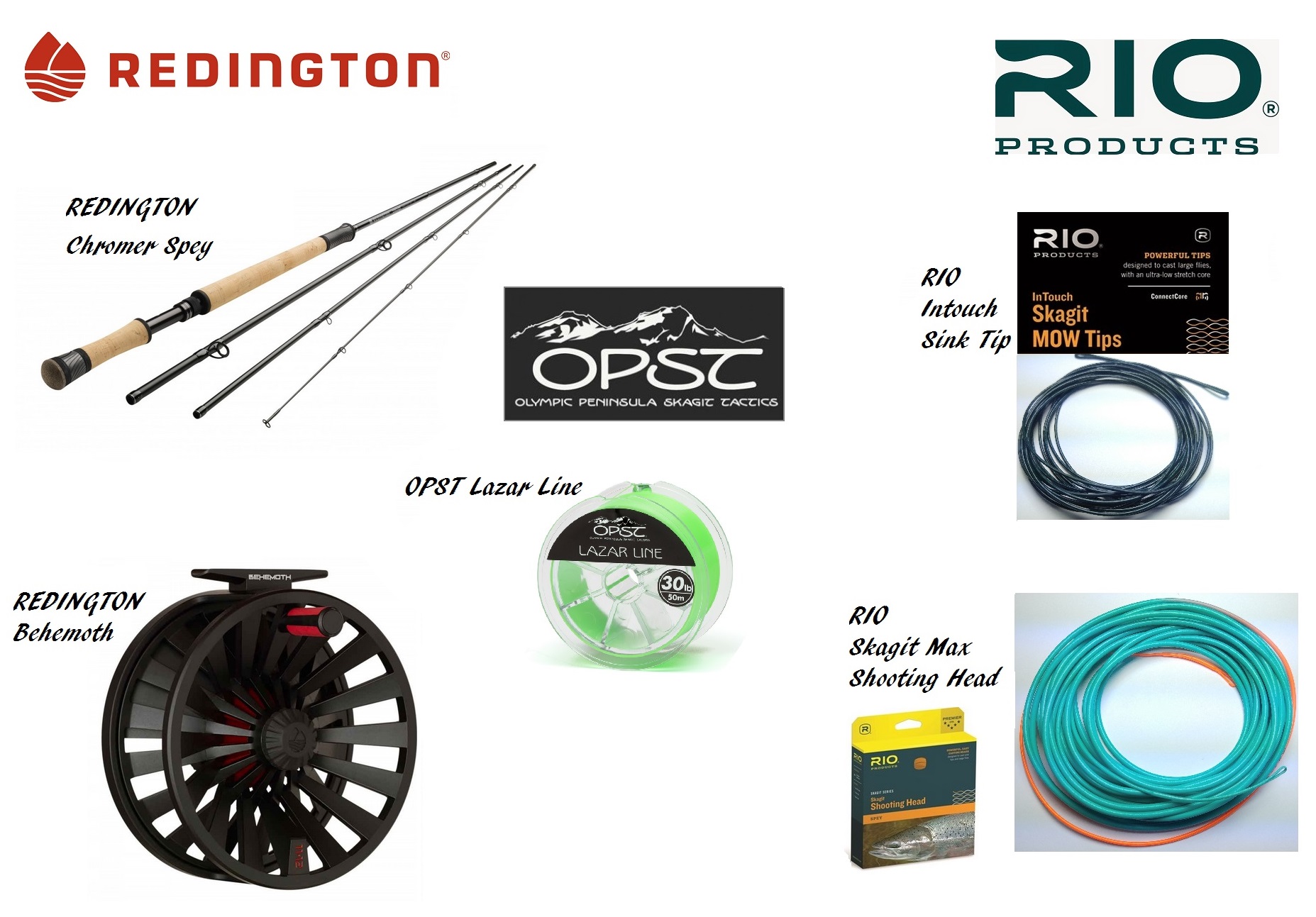
Retail Items = $621.75 / Your Cost = $529.00
Always feel free to call us @ (360) 417 – 0937 to order / Store hours: 9:30am-6:30pm Mon-Sat / closed Sundays during the summer
Online Store
also available, REDINGTON CHROMER – summer steelhead package
* Comes with the whole kit and caboodle! We built this package with winter steelhead in mind, this is a high quality rod package at the lowest price point on the market. *
THE QUICK BITE
full package details at bottom of this blog – click “MORE”
Spey Rod: Redington-Chromer, a true fast action rod capable of busting out high line speeds. Great for anglers who’ve developed a taste for “Fast Action” rods. For the value, the Chromer is hard to beat.
Reel: Redington – Behemoth Reel Our number one selling reel “friendly priced” for steelhead. Practical, reliable and aesthetically pleasing. Balances well with most any rod.
Shooting/Running Line: OPST LAZAR LINE, most popular and our personal favorite. A running line that is virtually memory free, low stretch and super slick for longer casts hence the name “Lazar” line
Shooting Head: RIO SKAGIT MAX. A best seller. Our pick for a winter line most casters can use. Will throw the heaviest of weighted flies and sink tips.
Sink Tip: RIO MOW TIP. Offers a smooth transition from the shooting head to the fly. Great for turning over bulky and heavy wind resistant flies like intruders.
(more…)
by Waters West | Mar 1, 2017 | Shop News and Sales, Uncategorized |
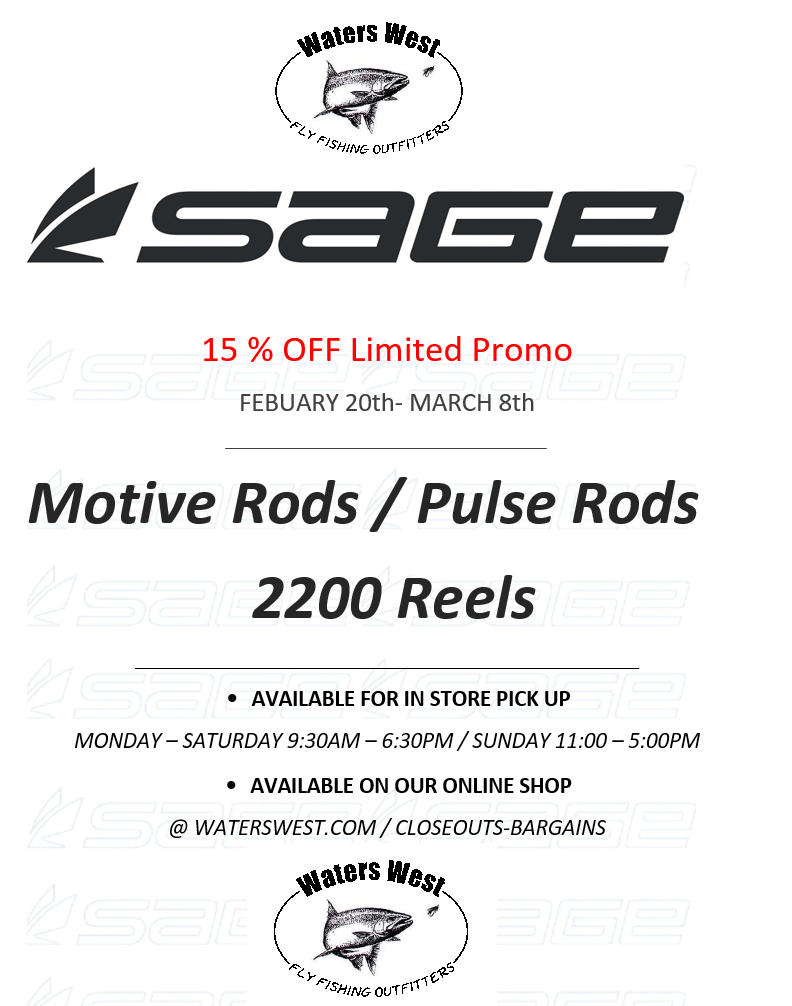
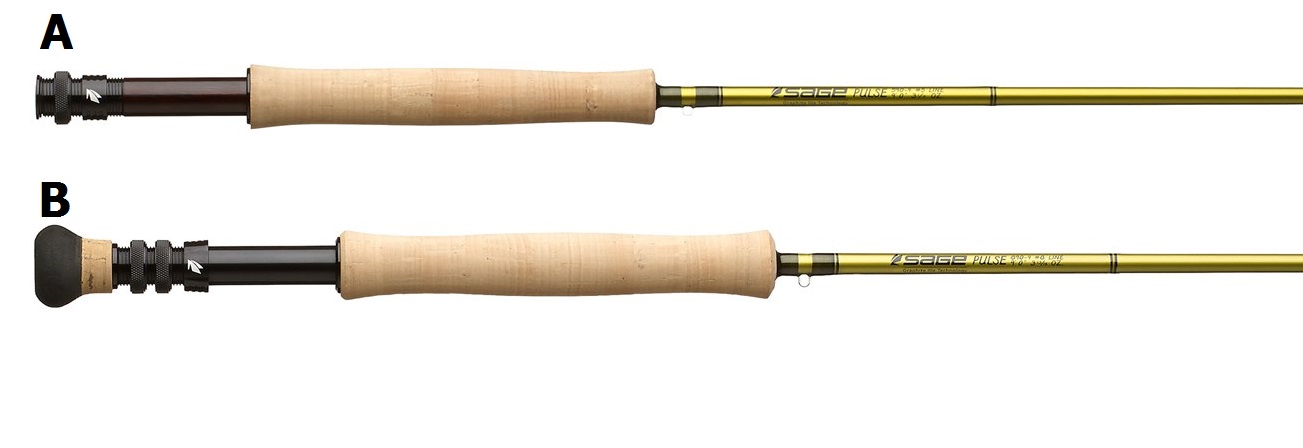
(CLICK ON LINKS TO BE DIRECTED)
SAGE PULSE – single hand rods: *FAST ACTION*. Whether your a dry fly fisherman or the die hard steelhead swinger. $450.00 Save: 15% off = $552.50
Trout Fishing From a Drift Boat/Smaller Rivers: 5wt 8′ 6″ (586-4 PULSE) built to cast a wide variety of fly sizes and weights makes it a great rod for wade fishing for trout. Because of the shorter length the 8′ 6″ inch is the perfect length for drift boat fishing, specifically so, pounding the bank with streamers and large terrestrials/simulators.
Trout Dry Flies and Nymphing: 4wt 9′ (490-4 PULSE) A light and versatile trout rod, for dry flies and smaller nymphs.
*Trout: 5wt 9′ (590-4 PULSE) Sage’s most versatile and *most popular rod model*. Handles trout flies of nearly any size and lines of varying densities.
Trout Streamers/Big Bass Bugs: 6wt 9′ ( 690-4PULSE) A streamer junkie’s favorite, this rod has enough power to cast big streamers or bass bugs all day. The 691-4 PULSE is saltwater-ready with an anodized aluminum reel seat.
Steelhead/Larger Saltwater Species: 8wt 9′ (890-4 PULSE) Great steelhead rod that will throw larger sinking leaders and flies, as well as the nymph rigs. The 8wt is the go-to saltwater model. Able to effectively present flies and handle the fight with bonefish, redfish, striped bass, largemouth bass or other similarly-sized species. Best option for steelhead nymph fishing out of a boat.
Steelhead Streamers and Nymphing: 8wt 9′ 6″ (896-4 PULSE) for anglers fishing heavy, sinking lines or heavy, multiple-fly nymphing rigs to anadromous species. The added lenght give more mending control and added distance to your cast.
Trout Stillwater Chironomid/Big River Trout Streamers: 5wt 9′ 6″ (596-4 PULSE) A slightly longer five-weight to aid in casting distance and line control (better mending capabilities) when fishing for trout. The 596-4 PULSE is great for big river fishing, nymphing and stillwater situations when fishing chironomid rigs using extra long leaders. Also, the rods extra length adds distance to your cast.
Trout Euro Nymphing: 3wt 10′ (3100-4 PULSE) is a European-style nymphing rod that allows anglers to fish a variety of long and short line techniques with varying fly sizes. This is a go-to Euro rod.
Steelhead Steamer or Nymphing/Large Trout Stillwater Chironomid: 7wt 10′ (7100-4 PULSE) offers the greatest line control (mending capabilities) of all 7-weights. Due to the exceptional length you have incredible mending capability in rivers and distance casts are lengthened on lakes or bigger rivers. Will make for great summer steelhead rod. Consider the 10ft for its incredible mending capabilities allowing the angler to work a fly or indicator rig through tricky riffles and runs. If fishing lakes with long leaders like many Chironomid fisherman of British Columbia who at times may fish tapered leaders up to 20ft these longer rods get the lift you need for such a task.
FOR FURTHER DETAILS CLICK “MORE” – BELOW
(more…)
by Waters West | Jan 2, 2017 | Classes and Clinics, Fly Fishing Education, New Products, Uncategorized |
It’s that time of the year again where you get all pysched up, buy your plane tickets, hotels, etc to go stand in the cold rain praying that this year you’ll finally hook up with a steelhead.
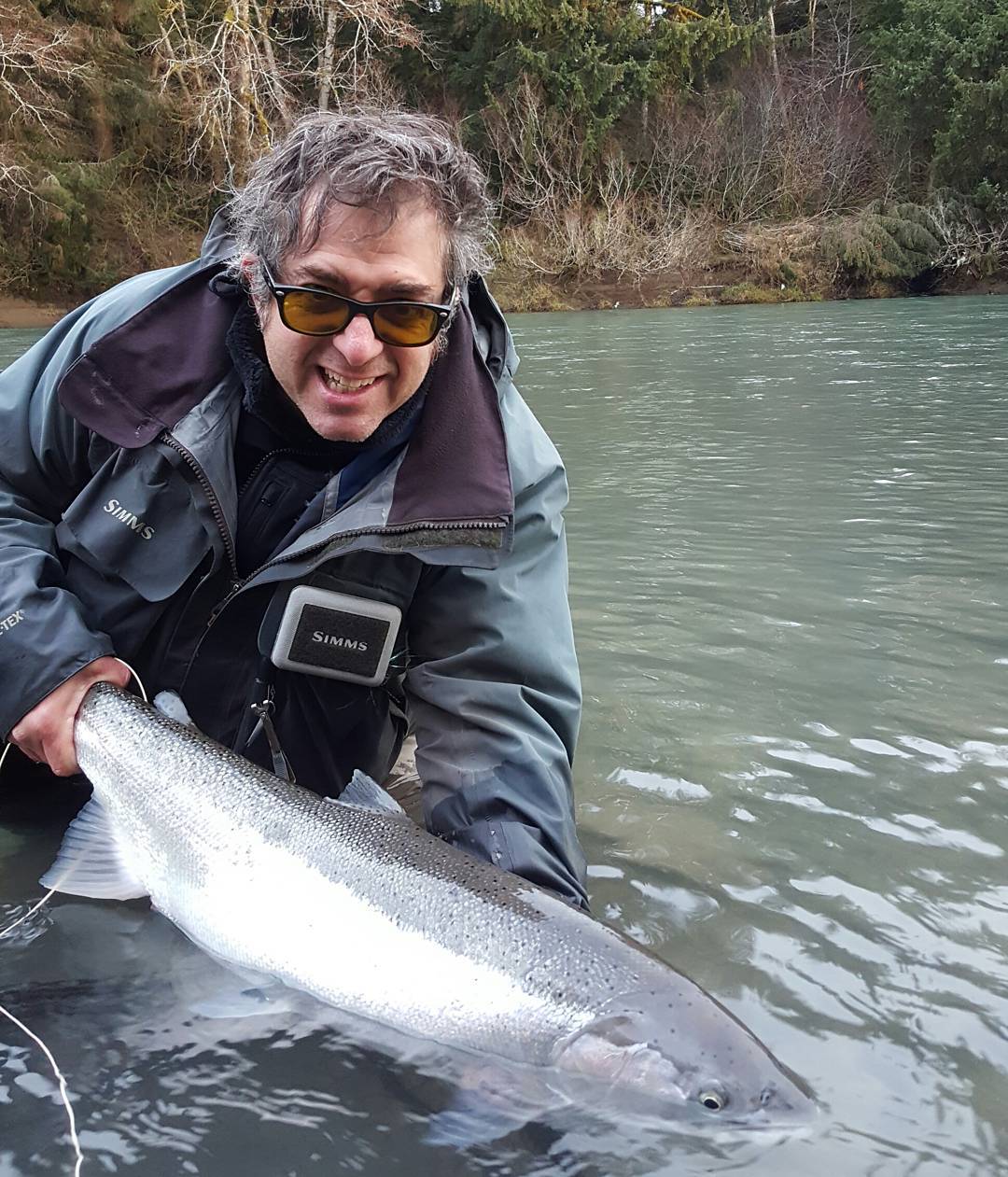
Some things that can seriously increase those odds:
Guided Trips. This is the fastest way to learn a river, learn what you’ve been doing wrong all these years, and maybe even get your first glimpse at hooking up. If nothing else you can spend the next week fishing hard and with confidence becuase at least your doing the right thing.
Cant swing a guided trip?
Take a spey casting class or even better the fishing class if you’ve got the basics down. At a fraction of the price you get a crash course of how to be more effective, and again, that confidence thing can be a game changer.
You dont need a new rod to catch a fish. The benefits of new rods are that they are generally lighter and more powerful which means more water time with out getting as tired. If you’ve only got a week to fish and want to fish every legal second, it can be a nice investment.
Best bargain spey rod: Redington Chromer
Top of the line spey rod: Burkheimer or Sage X
For reels, you need something with a good drag that wont freeze up in cold temps, won’t backspin on you, and absorbs the shock of a fast take.
Best bang for the buck: Lamson Guru HD
Top of the line spey reel: Einnarsson Invictus
We’re generally fishing skagit heads with T8 to T14 sink tips (10ft-12.5ft) and 2-4 feet of 10-15lbs maxima as tippet.
Skagit heads: Rio Skagit Heads or Airflo FIST Head
Flies: John Aleveras Suskwa poacher if you can only buy one.
It’s an especially cold winter so far, so make sure to layer up. The best layering for socks, long undies and under shirts we’ve found is Woolpower. Puts Patagonia, Simms, Smartwool, etc to shame. 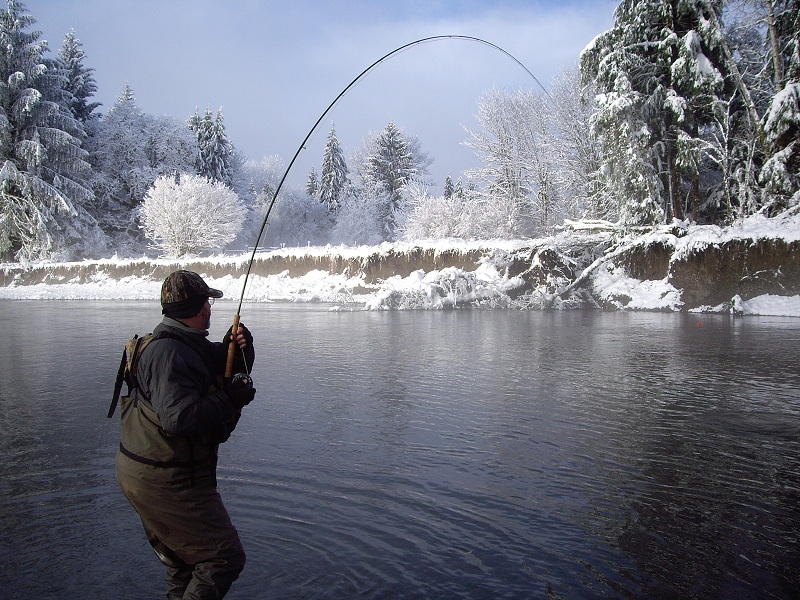
by Waters West | Dec 15, 2016 | Frequently Asked Questions, Product Review, Uncategorized |
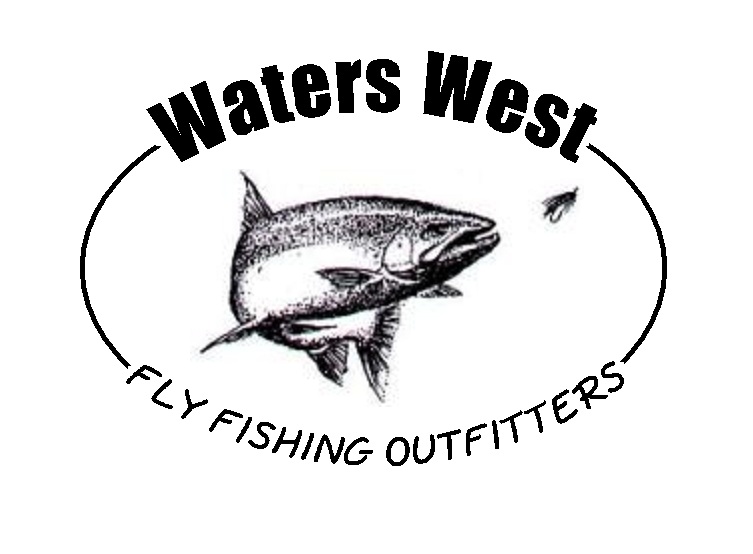
Olympic Peninsula, Wa. December 14, 2016
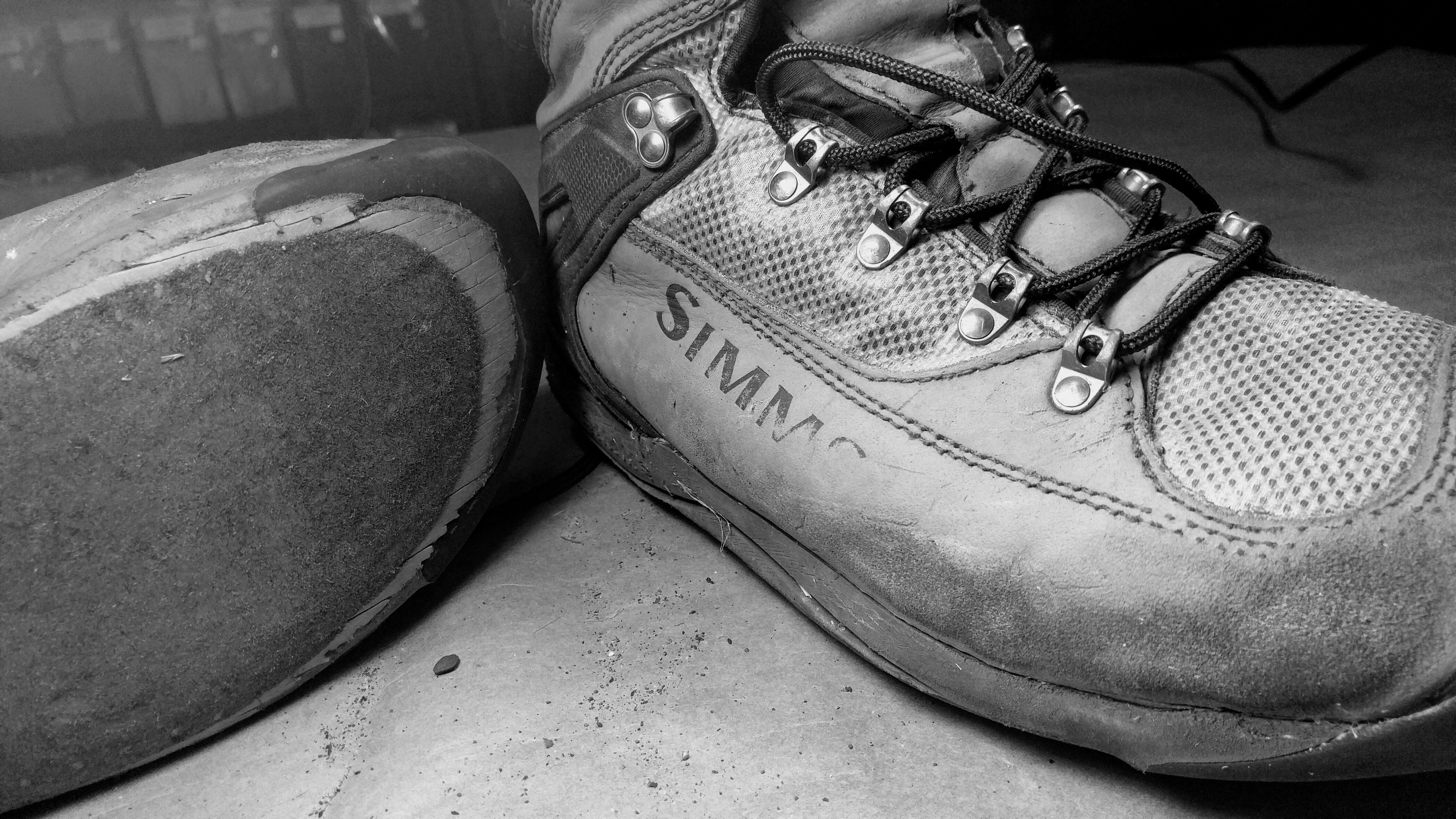
Simms G3 Guide Boot: 800 miles later
Simms G3 Guide Boot: 2 Years of Abuse
(for the down and dirty review just browse through pictures and scroll to the bottom and look for the Recap)
The rain forests of the Olympic Peninsula are perfect proving grounds for today’s “latest and greatest” products as they are tested in the extremes of constant moisture and continuous abuse. We are always fishing harder and pushing farther in search for anadromous fish and rely heavily on our gear too take the brunt of this devout persistence. This is a review of such a case.
The Test Subject: The owner of these boots happens to be a local and good friend of ours who by nature is a swing junky and fishes the OP every chance he gets. About 200 days a year. Fishing mainly the mornings in the winter and summer then driving his beater high gas mileage Subaru Forester back to Port Angeles for work in the late afternoon. Living the dream… He weighs 200lbs 6′ 1″ and hikes/wades faster and farther than anybody I know. During outings, on average he may put 2 to 8 hard earned miles into each trip. With much of that over grapefruit sized river-rock and bushwhacking dense rain forest terrain. To be fair, using a low median of only 2 miles per trip that puts these boots well over 800 miles! I almost want to lower that number to make it more believable, but then this blog would only be partially correct.
The disclaimer would have to be that this is only one pair from one individual.
Before and After
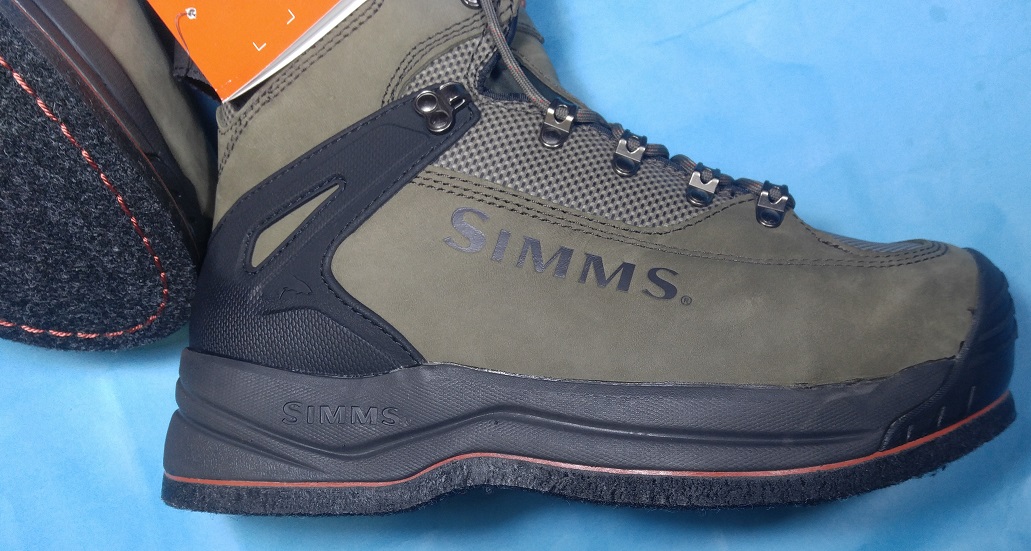
Fresh out of the box
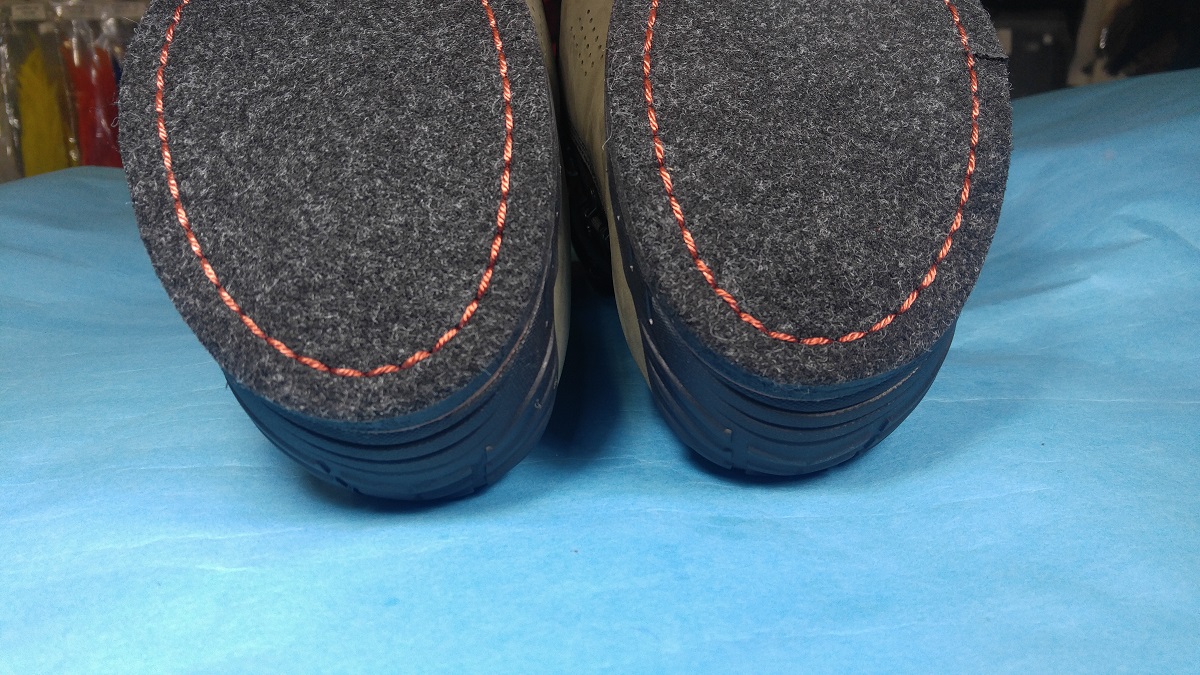
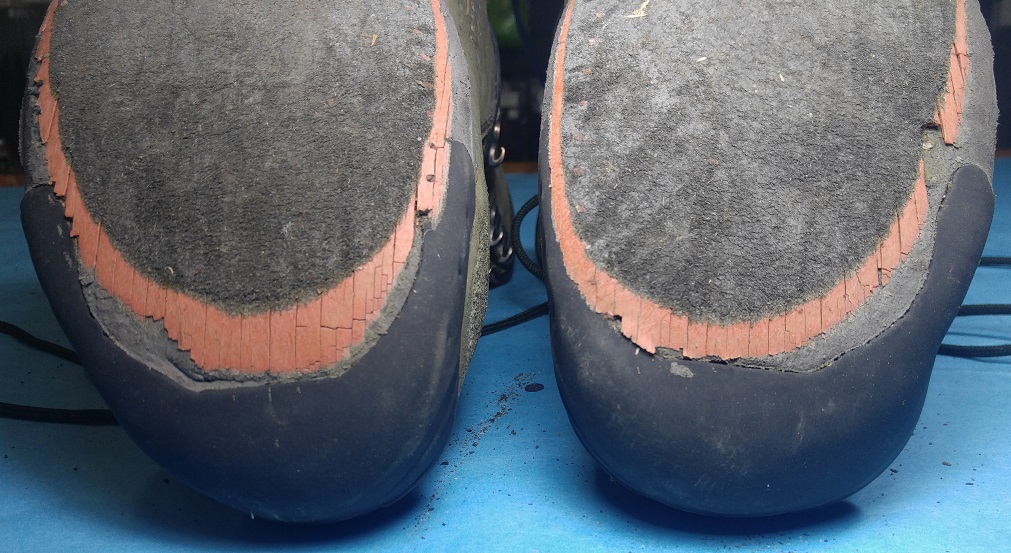
Felt bottoms did not peel or come off!… but you should replace your felt bottoms way before this happens… just saying
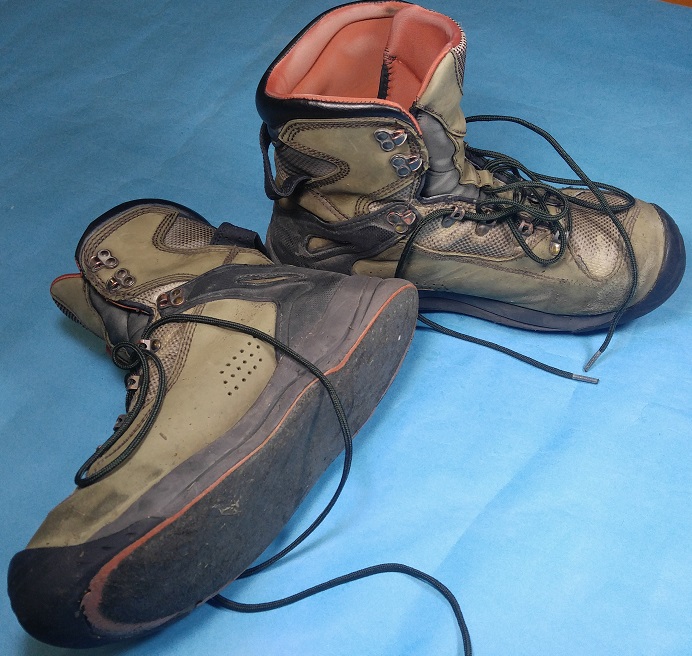
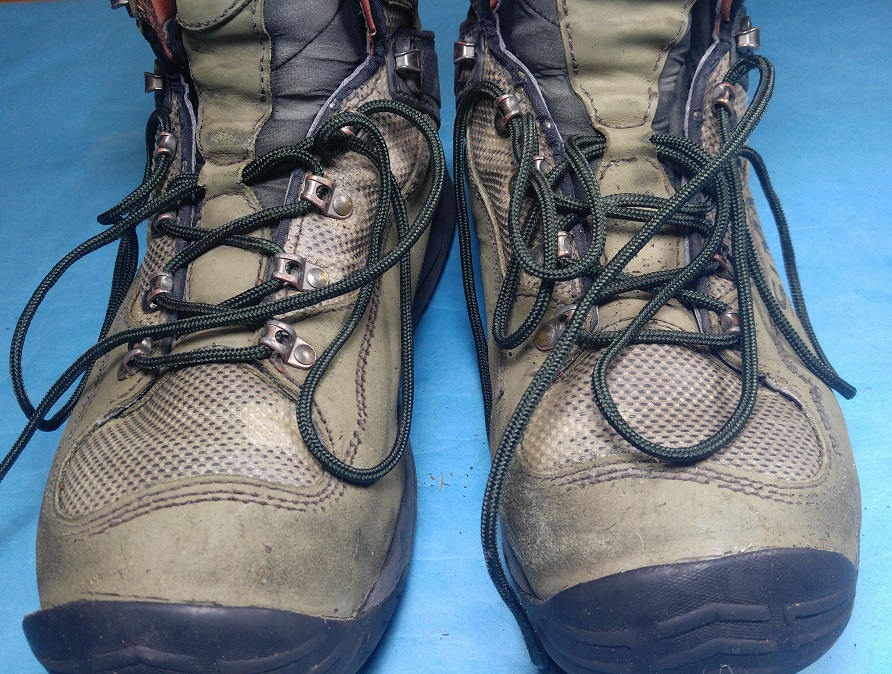
Laces have been replaced multiple times throughout the life of these boots
When looking for a durable boot we usually consider a few factors.
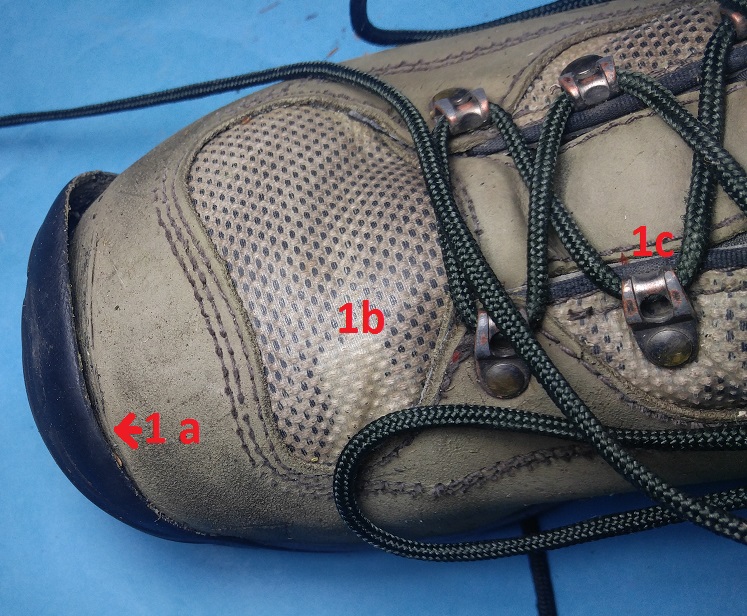
Toe guard failure after (approx mile 600) Not bad though
1a: Seam Strength: anywhere material is glued (such as the toe guard pic 1a) is always prone to peeling, few manufactures get this right. Though this did come unglued toe guard held as it should and with signs of separation around (approx) mile 600. Not bad
1b: TPU Fabric (Thermoplastic Polyurethane): At or just above where the toe flexes is a pressure point and common tear/failure location for many boots we see. Many fail at this wrinkle point. For this pair the TPU (thermoplastic polyurethane 1b) held up as it was claimed to by Simms. It did not separate or crack, nor was it so stiff as too tear or cause seam separation where the TPU meets the soft leather.
1c: Minimal corrosion on all metal lace eyelets and lacing hooks. (boot laces have been replaced 4 times) Also, an important highlight, none of the lace eyelets came undone, broke, or pulled out of the boot.
If you ever have owned a pair of wading boots and had one of these pop or brake on you while lacing up at the river you know how disappointing it can be. They are still firmly in place even after all those miles. This fact must not be over looked and greatly appreciated.
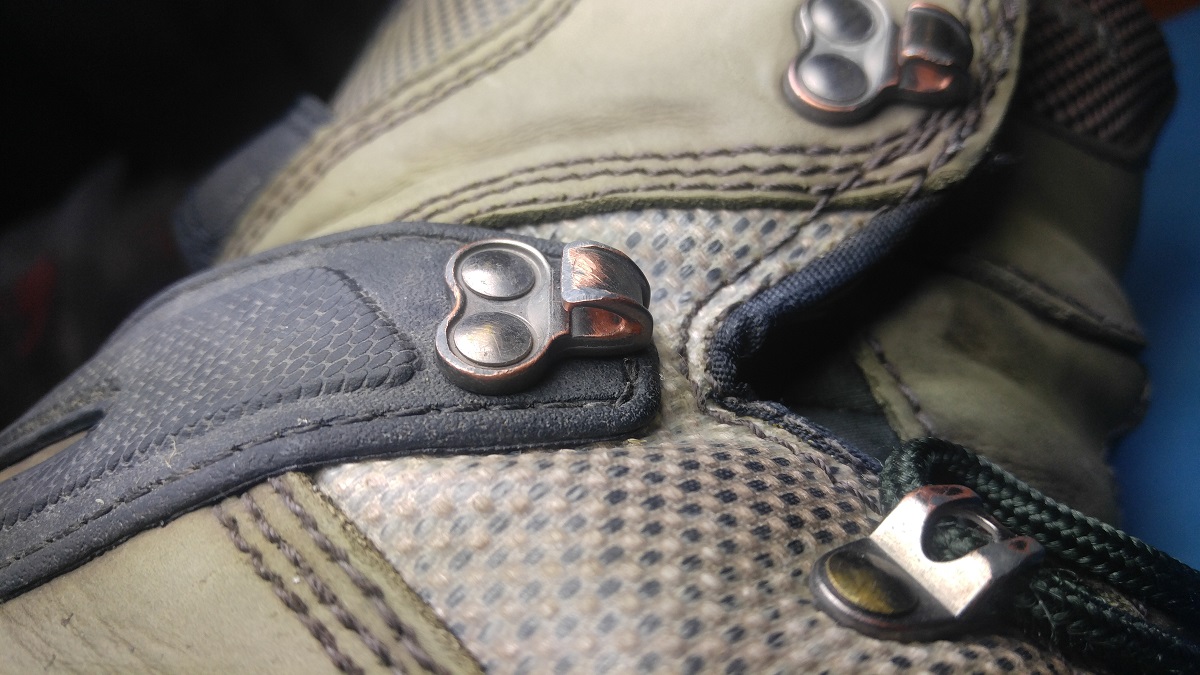
These metal “double hole” boot hooks held nicely w/ superb abrasion resistance, minimal corrosion and no signs of detachment
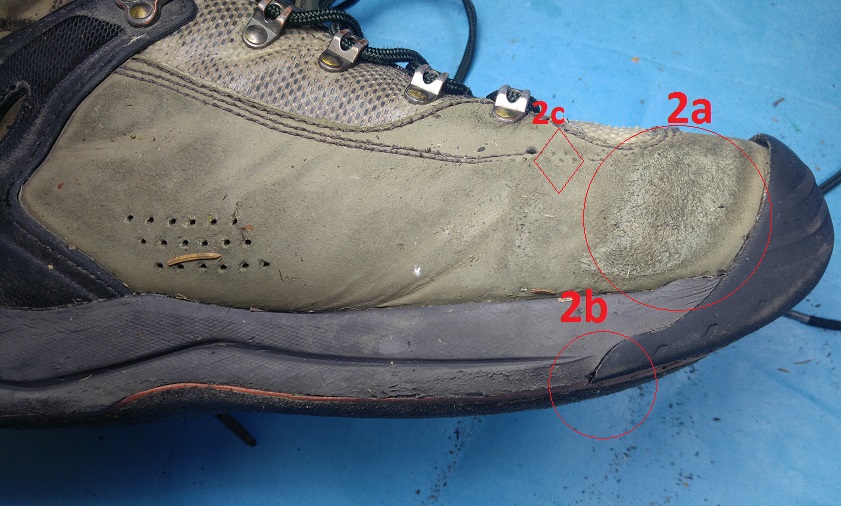
points of high abrasion
2a: Material Durability: On our OP rivers its not uncommon for us to stand or cross through fast riffles, which requires us to wedge our feet between two or three rocks, locking into place, in order to avoid being swept down stream. This puts massive amounts of wear on materials notably around the lower outer sides of the boot.
2b: This location receives continuous amounts of abuse and abrasion while walking and the meeting point of these two joining materials held up superbly! No evidence of peeling.
2c: Threads have worn away around points of abrasion. (Which is expected after all those miles) What we don’t want is for threads to pop at those “pressure points” we keep mentioning. Simms got it right when they put the side stitching high and up above the abrasion line. Notice how there are no threads in this concerning area. (the threads in the ankle support are counter sunk, circled in the next picture).
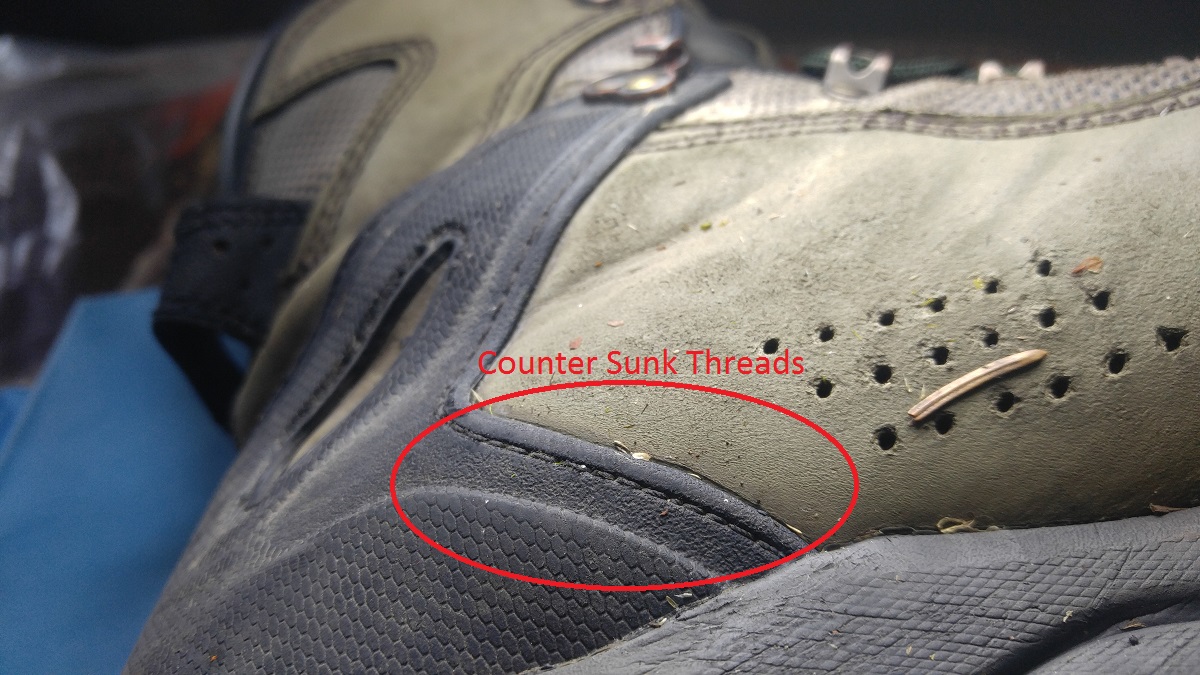
Score on the counter sunk threads! also notice the heal guard is textured incidentally adding traction when wedging feet between rocks
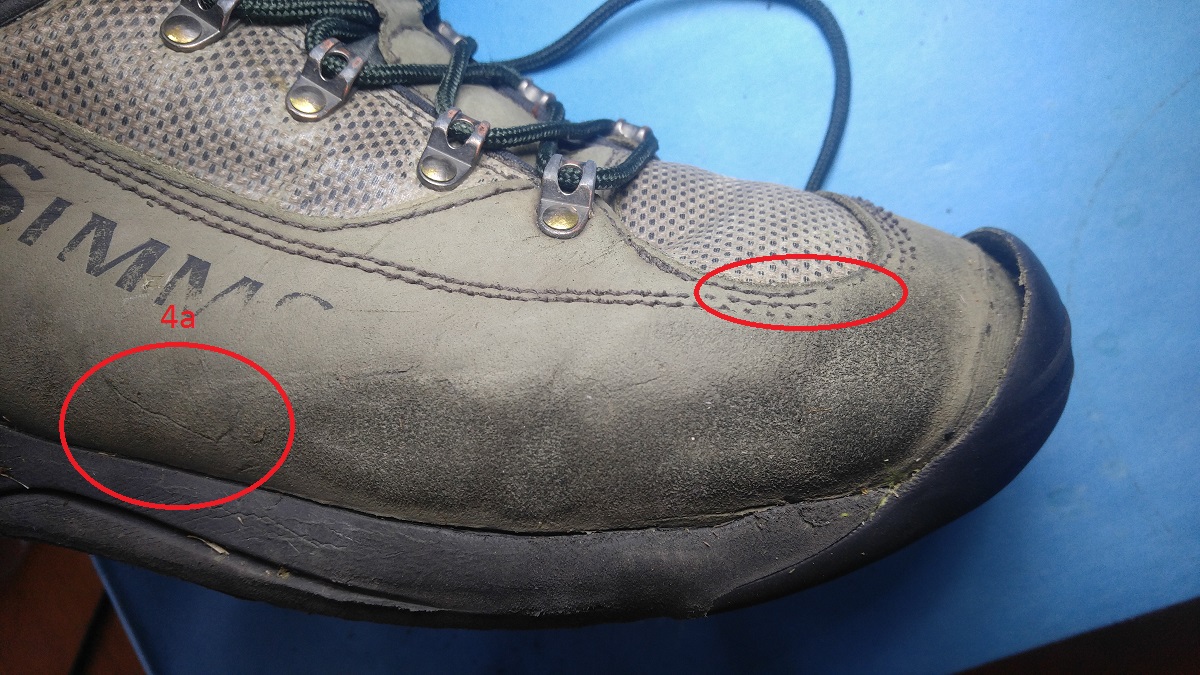
by minimizing the amount of side seams and by putting stitching above the abrasion line, threads/seams tend to last much longer
Can you AquaSeal your stitching? yes, but you will render the Warranty and some agree doing this will ruin the ascetic appeal. Also, unless you keep up on resealing those threads, eventually they will wear out. All in all the threads Simms used seem to of held up moderately well to our expectation.
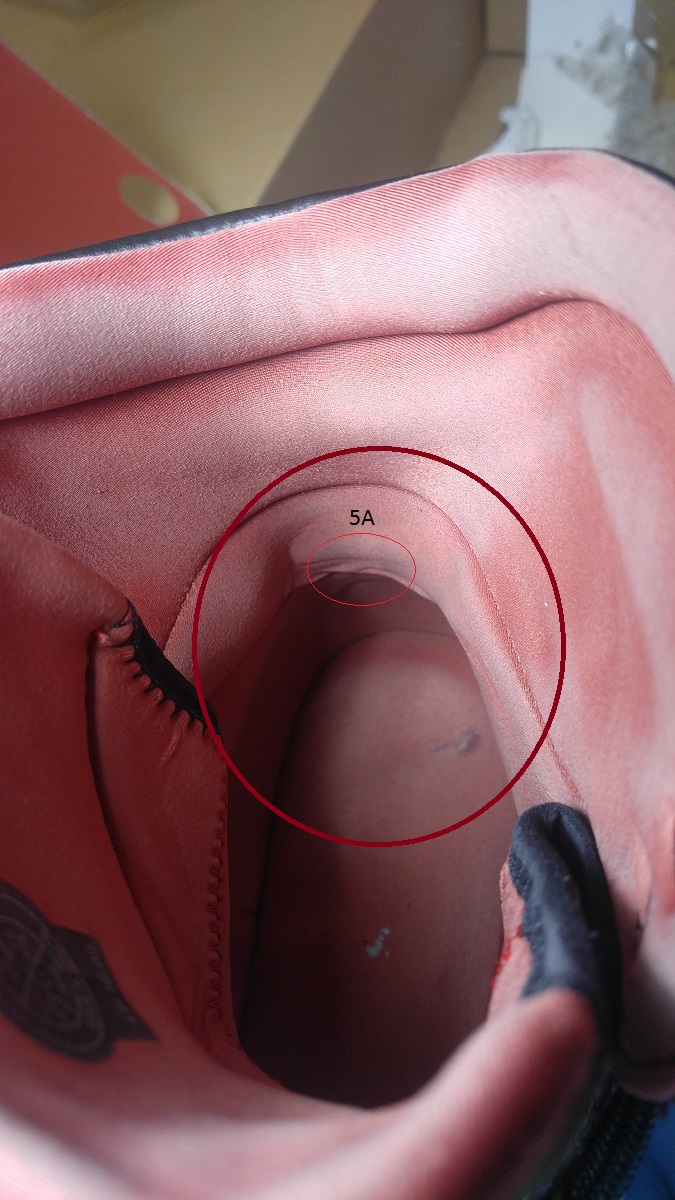
Say AHHH. No signs of significant wear. Always ensure your gravel guards are pulled down and hooked to your laces.
5a: The neoprene lining shows no signs of significant wear in this high friction point. (I have yet to see this location showing extreme signs of wear from a “properly fitted boot” so if you have worn this location out then either you need to find a more correctly sized boot, or just always remember to pull down your gravel guards!)
Comfort and Support. These boots are shaped beautifully, molded perfectly to the contours of the human ankle, so when you slide your foot into the boot its instant comfort and support. As this boot was “broken in” it became a little softer and flexible but did not loose any of its form fitting design and ankle support. After speaking to the owner of these boots he noted they were way more comfortable after they “broke in” and the comfort just got sweeter and sweeter.
(Personally most of us thought the ankle support was too much in the Simms Guide boot and restricted mobility much like that of a ski boot. But once this boot is officially “broken in” (maybe a dozen full day wade trips) the boot becomes very comfortable and gives a hiking and wading confidence as the Simms Guide boot design reinforces the ankle makes for a more sturdy footing in fast water.)
Recap:
- TPU (thermoplastic polyurethane) held up nicely stayed flexible, did not peel or crack.
- Excellent placement of threads (i.e up high and or countersunk) and minimum seams
- Great comfort and and sturdy ankle support that is beautiful once officially broken in and keeps getting better to the last day
- Boot lace hooks and eyelets are corrosion resistant and did not pop out of place.
- Felt bottoms did not peel off… (just check out the pic again to appreciate how well the felt sicks)
They say you can tell a fisherman’s story just by looking at the boots on his/her feet. These boots have seen the miles and tell of many cold hard- earned days searching for anadromous gold on the OP rivers.
Simms G3 Guide Boot: Vibram Tread w/ star cleat review. Coming Spring 2017
For inquiries call (360)417-0937 or to visit our online store WatersWest store
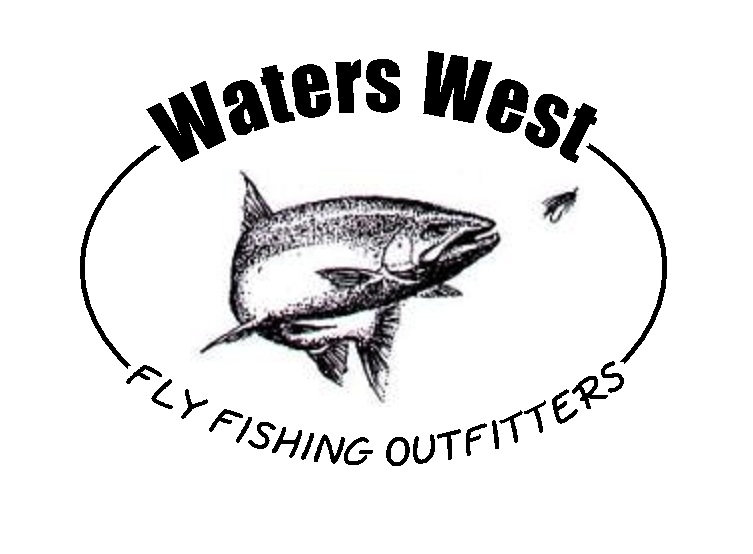
Happy Trails!
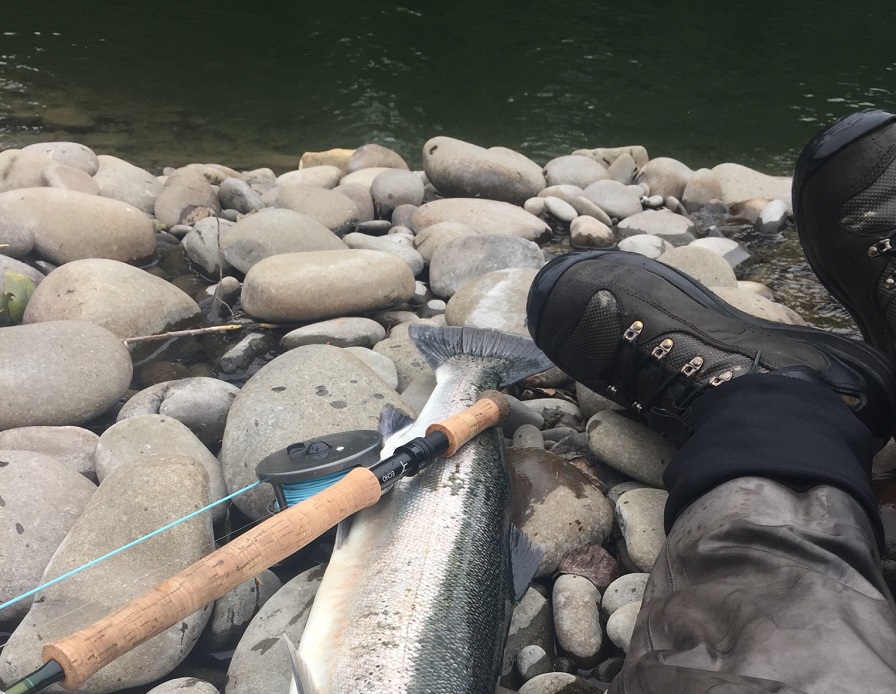
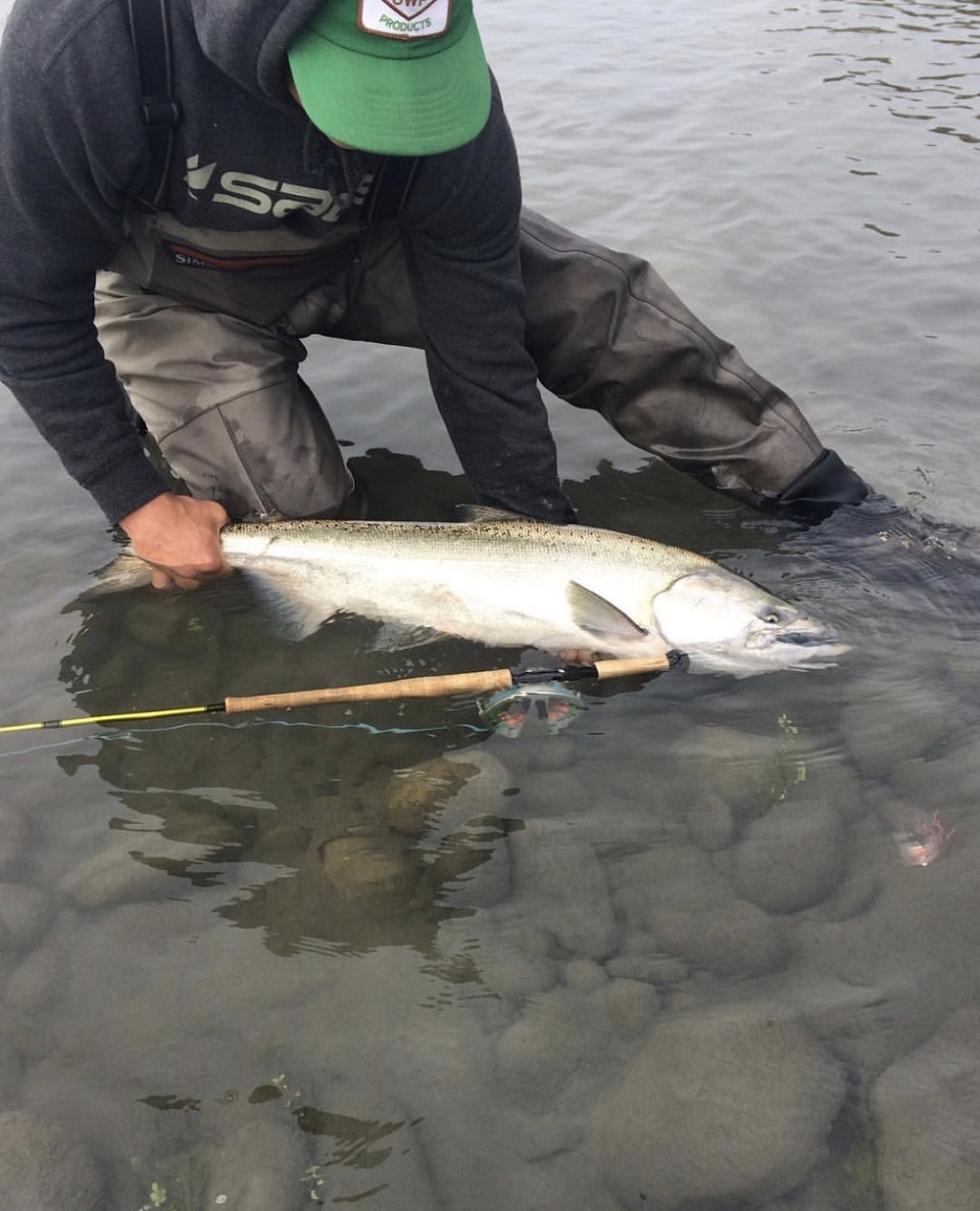
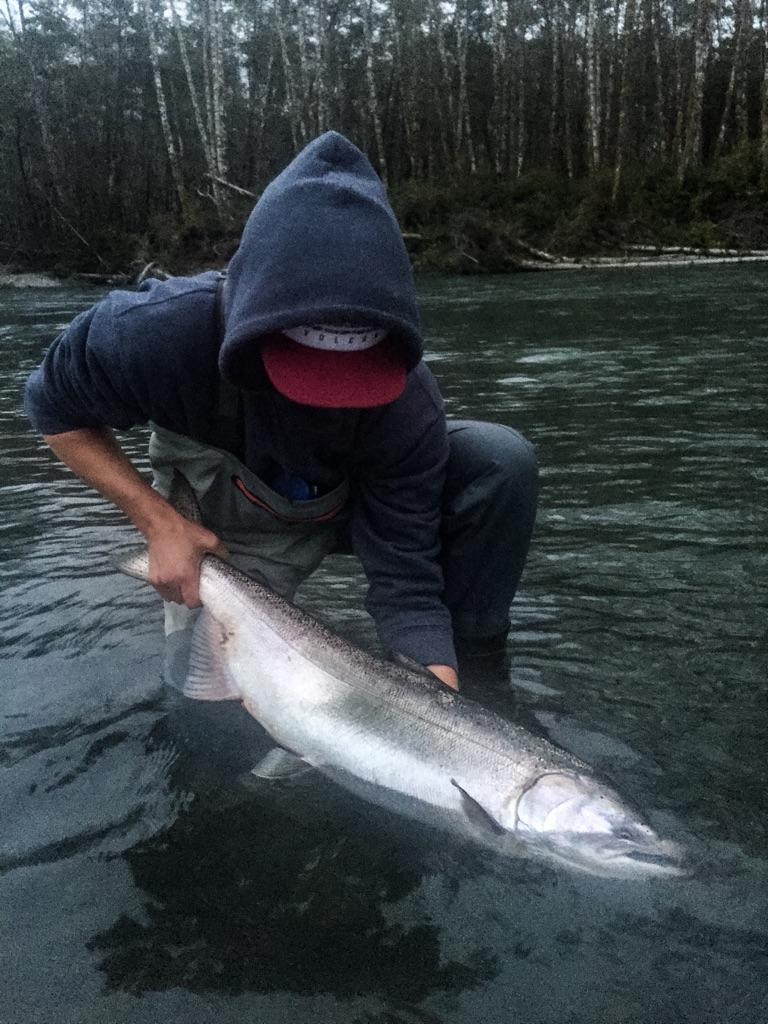
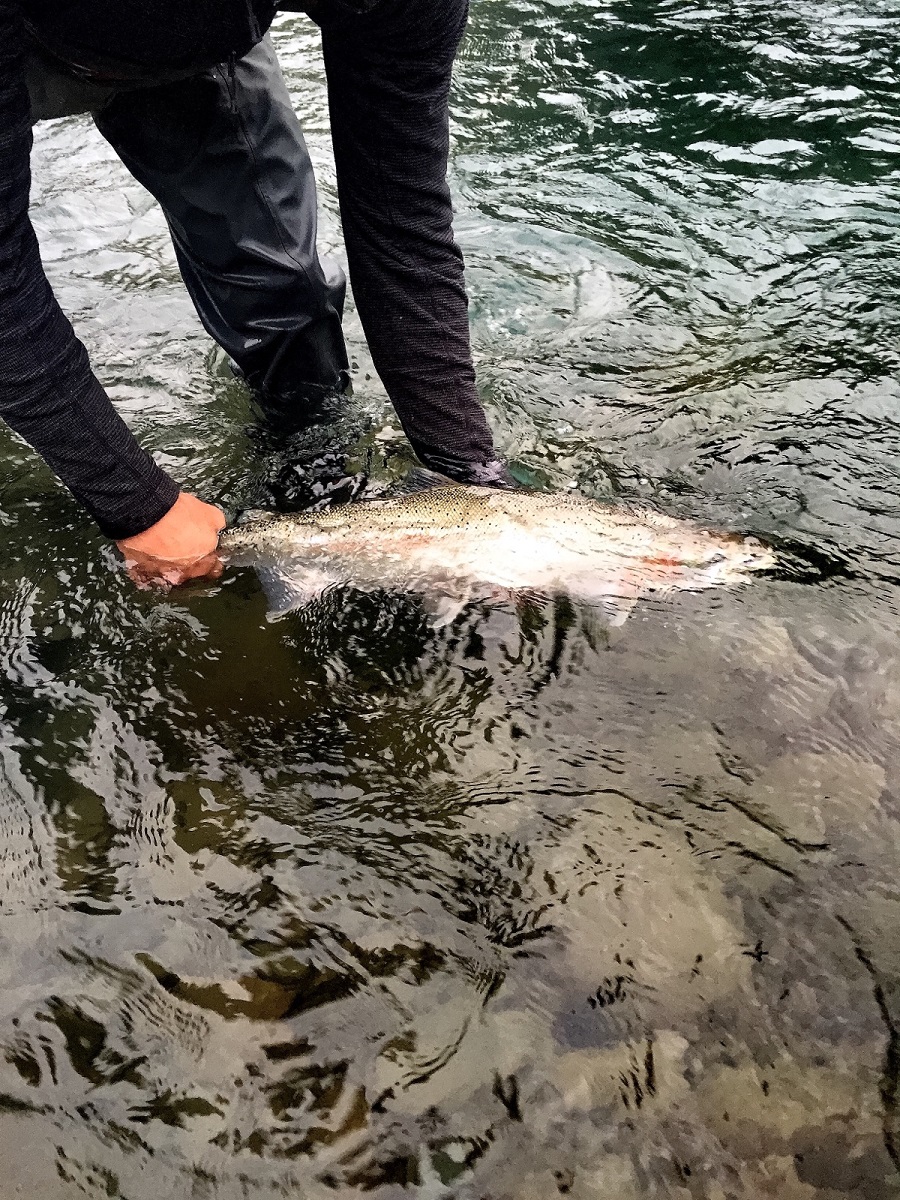
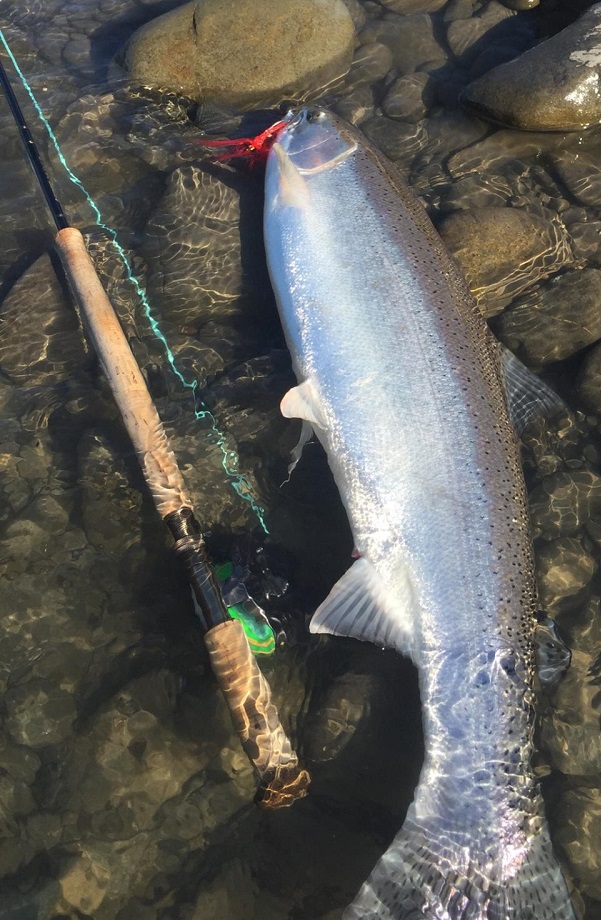
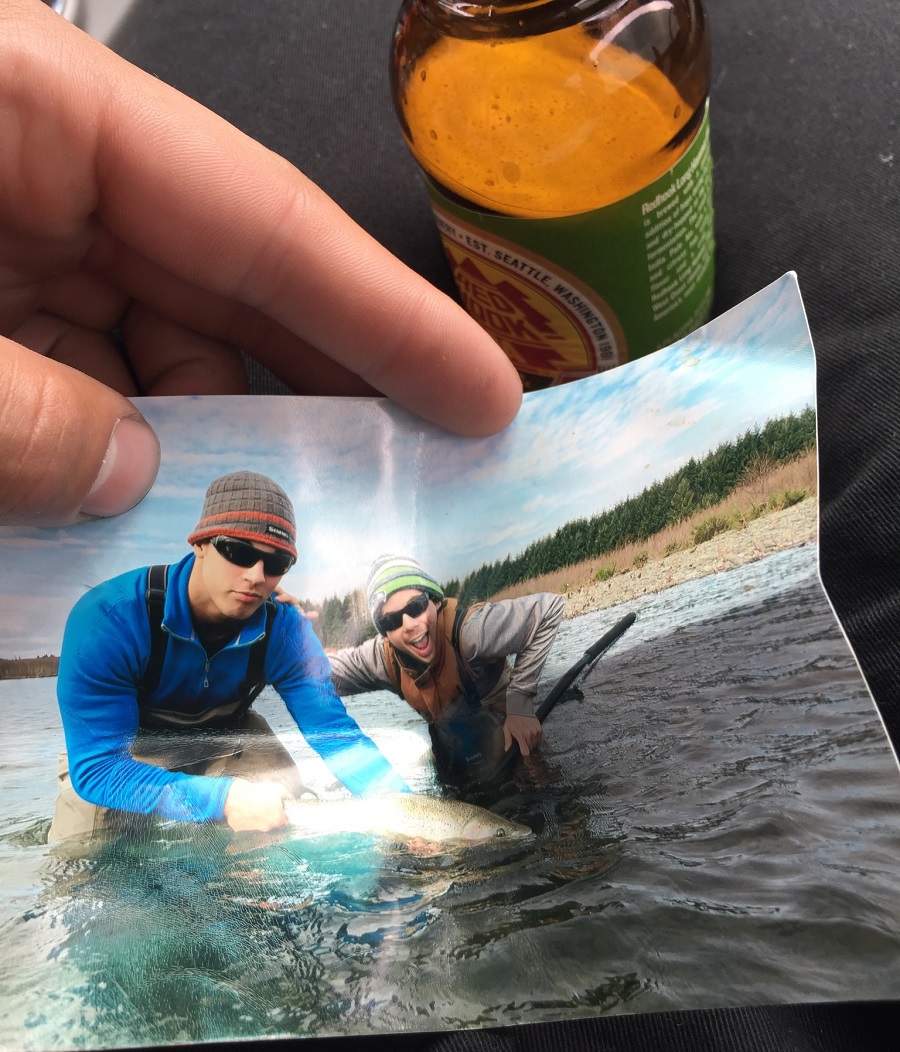
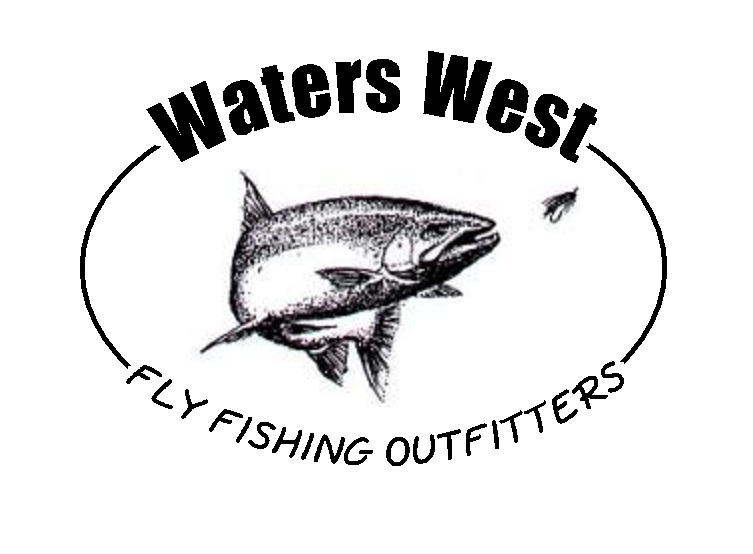
by Waters West | Sep 3, 2016 | Uncategorized |
With the winter tying season on its way it’s time to start picking through your fly boxes and filling in the empty spaces. Whether you’re tying classic steelhead flies or a Parachute Adams, chances are you’re going to need hackle and a lot of it. We here at Waters West highly recommend checking out our selection of Whiting’s capes and saddles. The benefit of purchasing a whole cape or saddle isn’t just that you get a large amount of feathers, but also a large variety of sizes to choose from. That way you can tie a #14 stimulator and a steelhead intruder with the same saddle.
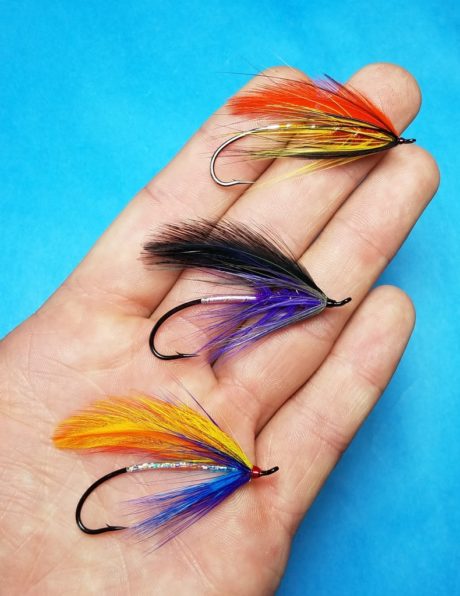
Top: Sol Duc Spey (tied by Sean Dalquhist) Middle: Isabella Spey (Tied by John Alevras) Bottom: Winters Hope (Tied by John Alevras)
Whitings “American Rooster Capes” are everything you’re looking for when it comes to tying classic steelhead flies. We offer a large variety of colors and styles of these capes including grizzly, badger, black laced white and solid colors. All of these styles make beautiful wings on flies like the Winters Hope, Isabella Spey, and Sol Duc Spey. The same feather that’s used on the wing can also be used as the hackle or collar on the same fly. They also tie in surprisingly easily so even an inexperienced tier can tie some beautiful feather wing patterns with a little practice.
Not only are they great for steelhead flies, but they are perfect for small tails on trout flies. The fibers stick straight off the back of the hook and are stiff enough that they won’t foul up around the bend of the hook. These hackles have also been the feather of choice for tying tails on saltwater patterns such as Lefty’s Deceiver. They’re stiff enough that they don’t constantly foul up, and their translucence helps it look like a natural bait fish under the surface.
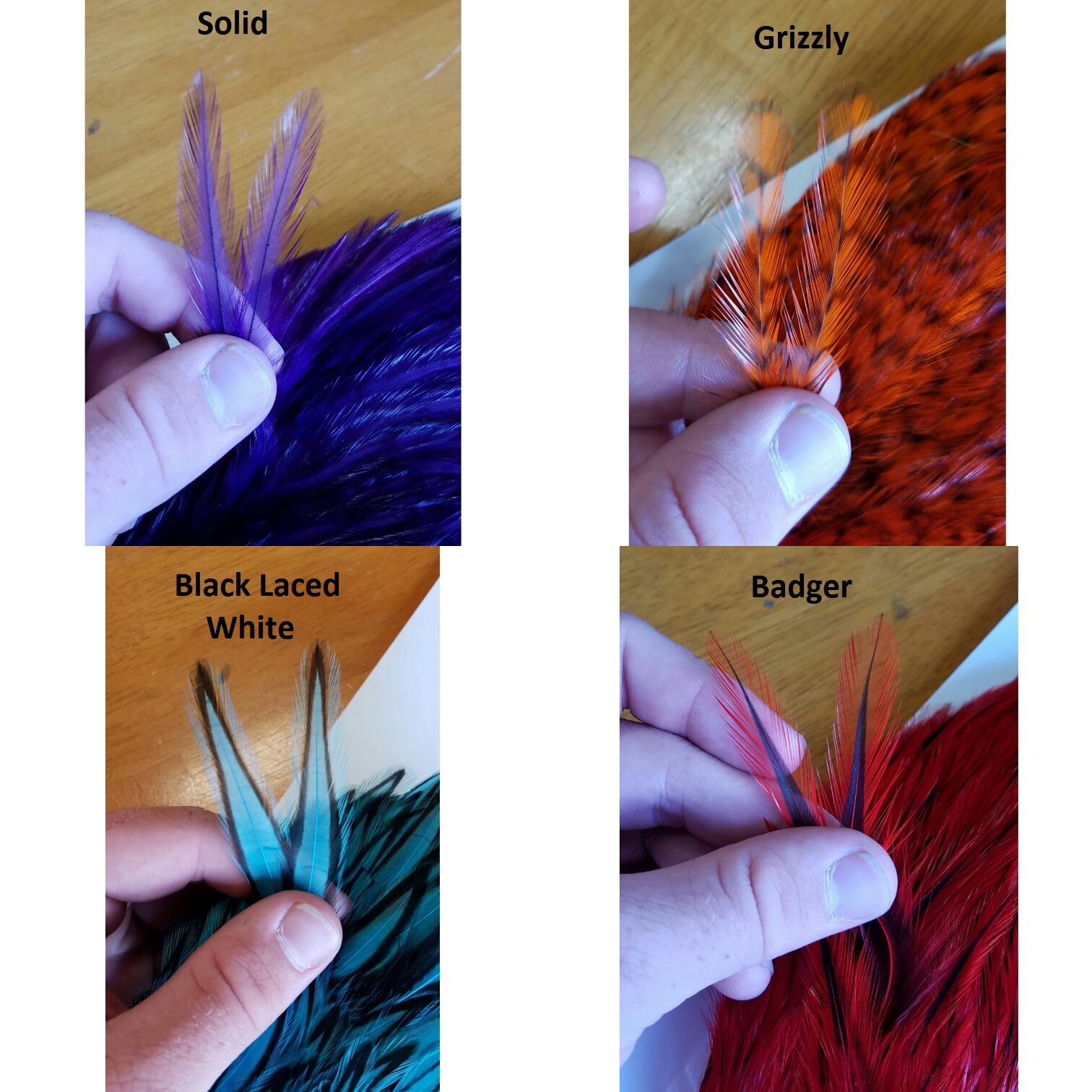
Whiting’s “High and Dry” saddles are a fly tyers dream! When it comes to tying intruder wings or camo squids these feathers are exactly what you’re looking for. They’re long, soft, webby and come in an incredible variety of colors. Tied in as a tail these feathers explode in the water with pulsation and movement and are still extremely durable. You don’t have to worry about their fibers falling off in the current or tips breaking after a few smacks on the rocks.The pointy tips also make them great for wings on smaller summer flies such as a Silver Hilton or Orange Summer Run.
Not only are these saddles great for steelhead tying but they are perfect for any of your trout flies. The large variety of colors and fiber lengths makes it easier to customize your dry flies to your exact specifications while still being able to use the same saddle for any of your streamers and nymphs. They wrap in wonderfully to make a great bugger hackle or even for nymph legs such as a bitch creek special.
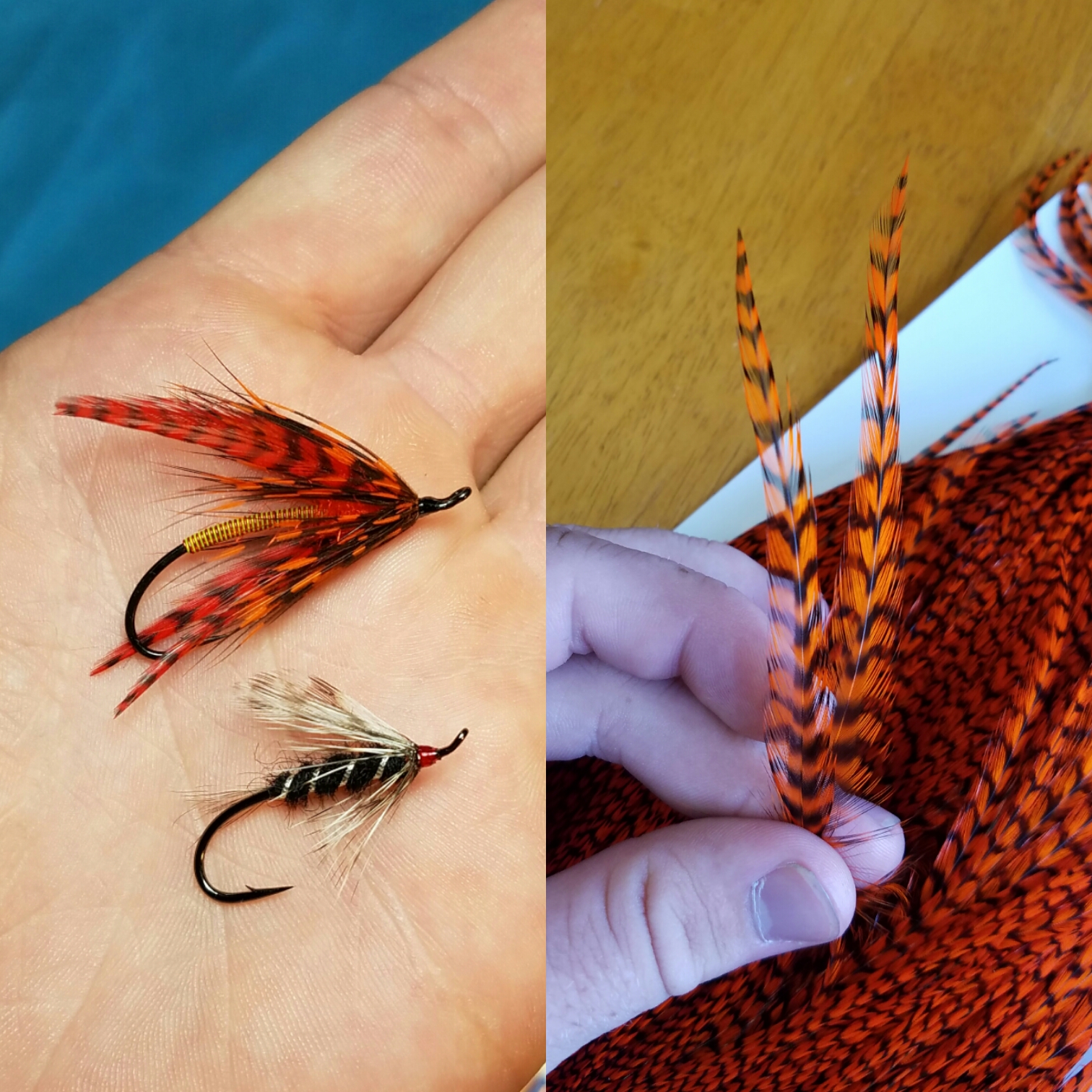
You can find all of these capes and saddles on our website! Click here to check them out.
by Waters West | Dec 23, 2015 | Classes and Clinics, Shop News and Sales, Uncategorized |
Spey Classes!
We’ve got some more Spey Class dates! These classes fill up quick, so jump on it.
Dates:
- Sunday Jan 10th 2016
- Saturday Jan 30th 2016
- Saturday Feb 13th 2016
Time: 9-3ish
Place: Either the Elwha under the Pedestrian Bridge or on a West End river.
Cost: $95
Fly Tying Courses!
Our Steelhead Fly Tying Course is getting full fast, but we’ve still got spots open for both the 3-530pm and 6-830pm class time
These are 3 class courses that cover a wide variety of techniques and flies to provide a foundation for future tying endeavors. We offer a Beginners Course and a Steelhead Course, and both will leave you with effective flies for the OP and beyond.
Get more info by clicking here!
We’ve also got some free stuff happening!
We’re putting on free tying demos every Saturday starting Jan 9th, 2016 at 10am. It’ll mostly be Waters West staff with a few special guests sprinkled in here and there.
We are also doing Open Tie Nights every Tuesday starting Jan 5th, 2016 from 6-8. This is a BYOStuff event. Whatever you want to tie, no instruction, just hanging out and tying after hours with good people and probably some beverages. Note that the shop closes at 6:30 for ordinary folk, but we’ll keep the cash register open for those tying 😉





























